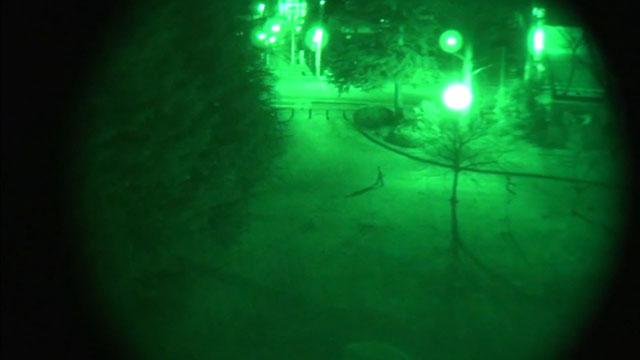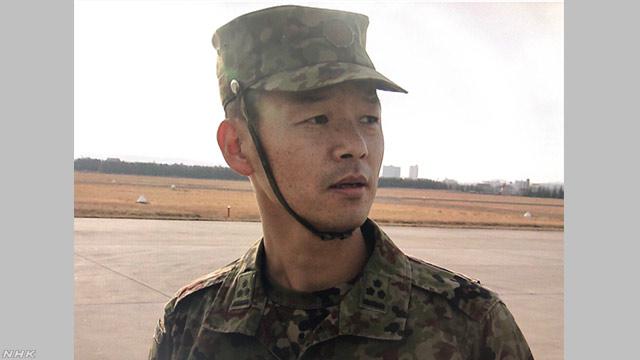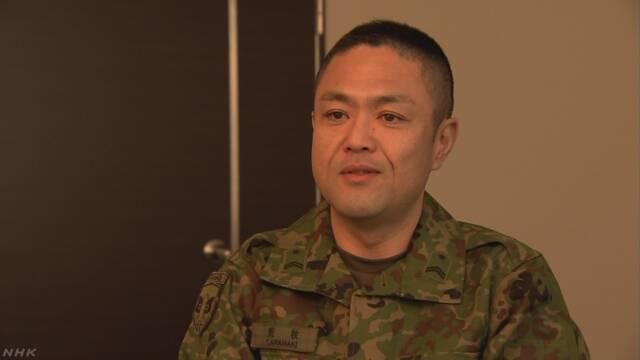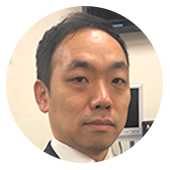Breaking their silence after 8 years

"I didn't want to say a word on that day," says Masayuki Baba. The 53 year old was working as a rescue helicopter captain at the Kasuminome Base back then.
Baba has refrained from talking about his experiences of that day because they were too shocking. But he agreed to an interview for the first time because he now thinks he needs to share the lessons from the disaster with younger people as his retirement approaches.
Baba carefully chooses his words to explain what he remembers.
"Soon after I took off for the first time, I could see traffic congestion in the city of Sendai. Then I turned my eyes toward the ocean and I was stunned. A tsunami had reached a road about 3 to 4 kilometers from the coastline. I was confused and wondered why the coastline was so close," he says.

Night vision goggles: Key to nighttime rescue
After the interview, I contacted organizations equipped with helicopters, including the SDF, police, firefighters and the Coast Guard, to check what time their helicopters had taken off and landed, and where they had operated 24 hours after the quake.
I found that only the SDF personnel continued their efforts to save survivors between the night of March 11 and early on March 12. Police and firefighters suspended their rescue activities during this period.
The rescuers used wires to hoist survivors to their helicopters and bring them to safety, a method known as hoist rescue. But this was a problem at night as electric cables and rubble could not be seen in the dark.

How were the SDF personnel able to continue their operations? They had special equipment -- night-vision goggles. The goggles are used in the SDF's Japan defense campaigns. They allow even faint light to be seen clearly in the dark.


I got a set of goggles and tried them on. Even in the middle of night, from a height of 40 meters, I could detect a person on the ground.
Baba says he wore the goggles to search for people in need of help. "I could see people on rooftops waving their hands and others flashing their lights from the second floor of their homes to signal for help," he says.
SDF personnel must undergo certain training and receive certification in order to fly helicopters while wearing night-vision goggles. Luckily, Baba and his colleagues had been undergoing this intensive training from six months before the disaster. As a result, six members of the air unit were certified when the quake and tsunami hit. They formed three pairs to operate three choppers.
The aircraft shuttled between inundated areas and the base through the night, saving more than 120 people.
Unprecedented problem
Over at the base, people were struggling with an unprecedented problem. It was late at night, and helicopters from other regions were arriving one after another to assist. But the quake had damaged the facility's aerial lighthouse, which had been used to guide aircraft and show them where to land.
Shintaro Kakeda was controlling air traffic at the time. He beamed an emergency signal lamp using his hands on helicopters to prevent accidents. "I felt it's extremely important to constantly think about how to deal with unexpected incidents," he says.

"They were alive just a minute ago"
Baba said that while his training paid off during the nighttime rescue operations, he was unable to save all of the people who needed help.
Air rescue operations were also limited to Sendai and surrounding areas on the day of the disaster. Helicopters couldn't go to one of the hardest-hit cities, Ishinomaki, and surrounding areas because the nearby Matsushima Base had sustained damage and the weather was poor.

Shortly after 5 AM the next day, Baba's team finally arrived in the region, where they were hit with a harsh reality. It was cold enough for snow. Many tsunami survivors had apparently died from hypothermia before help came.
The crew on one of the helicopters, Takashi Aramaki, recalled his experiences of the day in hopes of passing on what he learned. After flying into an affected area in Ishinomaki, he used wires to hoist survivors. He says he still cannot forget what they told him.
"Many survivors asked that we also take the deceased with us, explaining that they were alive just a minute ago. I wanted to take the bodies to a warmer place, but we needed to prioritize the survivors, so I apologized and declined the requests. While I regretted not having been able to reach the area earlier to save the victims, I knew we were doing all we could, so I felt conflicted. Honestly, I'm not sure if I've worked out my feelings," he says.

In a bid to save as many lives as possible
New measures have been taken at the Kasuminome Base based on the lessons learned from the disaster. For example, the helicopter landing area has been expanded by 30 percent to accommodate helicopters from other regions which have come to assist in emergencies. Lighting systems have also been installed along the runway to make nighttime landings easier.
Members of the Kasuminome Base are also expanding their area of activity and are training in Ishinomaki City in collaboration with a local hospital and other institutions.
Baba, with his 30 years of experience as a pilot, says he wants to pass on the lessons from that day to the younger SDF members. He says, "I am convinced that my training mattered. We must let our members know about the importance of it and about having a strong sense of mission."

Baba's remarks convey his deep regret for the many lives they couldn't save, even though they worked desperately through the night. I sensed his determination not to let that go, despite doing all they could.
A natural disaster could happen anywhere at any moment. I, too, want to keep reporting on people's memories of the disaster and what they have learned from it in the hope it will help save as many lives as possible in a future disaster.

